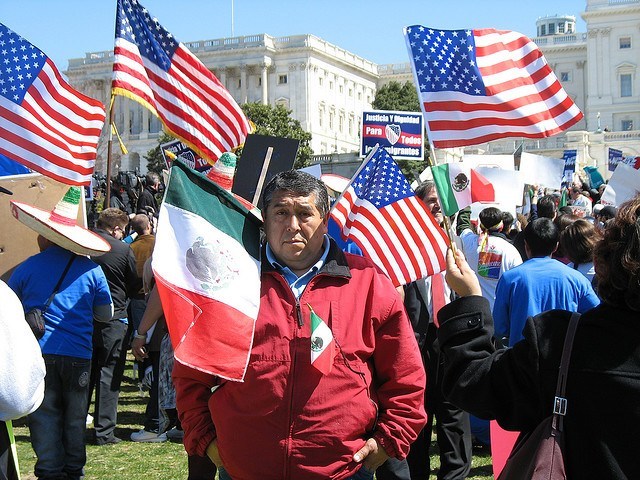
Group’s Vote to be Decisive For Coming Presidential Election as Hispanic Group Scores Politicians
Democracy, elections and voting at Democracy Chronicles
With Voters Set To Exert More Political Influence Than Ever In The 2012 Elections, The USHCC Launches Speak Our Language Spanish Political Media Project
Today, the United States Hispanic Chamber of Commerce (USHCC) announced a new initiative to track and analyze Spanish-language political ad spending in 10 top target states leading up to the November elections. Using comprehensive data on local television advertising from Kantar Media’s CMAG, the Speak Our Language project will both showcase the campaigns with a strong level of commitment to Spanish-language media and highlight those who ignore this critical demographic with their paid advertising.
“This election, Latino voters have the power to exert more influence, decide more races, and cast more votes than ever before, and there’s no doubt that political candidates and committees are fighting to capture that vote,” said Javier Palomarez, President and CEO of the USHCC. “But historically, political candidates and the various organizations that support them have largely ignored the media platforms Hispanic voters consume most: Spanish-language TV, radio, print and online outlets. The USHCC will be working to hold 2012 campaigns accountable for their commitment to the country’s Hispanic communities.”
CMAG’s research shows that overall, in 2008, an average of just 4.03 percent of all political TV ad spending across 28 top markets went to Spanish-language stations. In 2010, just 3.9 percent went to Spanish-language stations.
At the same time, the percentage of the electorate that is Hispanic continues to grow. In 2008, 40 percent of all new voters were Hispanic. In 2012, the number of registered Hispanic voters is expected to exceed 14 million.
“In almost every one of the 28 markets we examined over the last three elections, the share of political TV ad spending dedicated to Spanish-language stations was significantly lower than the share the stations received of the general market,” said Ken Goldstein, President of Kantar Media’s CMAG. “For example, in 2010 in Miami, Spanish language stations garnered 31 percent of all non-political television advertising, but only 12 percent of the political advertising and in Denver, Spanish language stations attracted 14 percent of all non-political advertising, but just a little more than one percent of political ad spending.”
One of the most important ways campaigns connect with voters is through television advertising. No matter how one feels about political ads, the fact is that in America today ads are the primary vehicle through which candidates from the presidential level down to the local level communicate their message and seek the support of voters.
“Political candidates and committees know that they need Latino voters in order to win, but they have to back up their words with real action and direct communication in order to mobilize the key Hispanic communities and garner those votes,” said Palomarez.
KEY FACTS ABOUT HISPANIC VOTERS
- 50.5 million: Number of Latinos in the United States (out of 308.7 million people)
- 16: Percentage of the total U.S. population in 2010 that was Latino.
- 29: Projected percentage of the U.S. population that will be Latino in 2050.
- 43: Percent increase since the 2000 census of the Latino population in the United States, according to the 2010 census.
- 14 million: Projected number of registered Hispanic voters in 2012.
- 21: Percentage of the population of swing-state Florida is Hispanic.
- 17: Percentage of potential voters in swing-state Colorado that is Hispanic.
Full Study available at USHCC.com
Leave a Reply